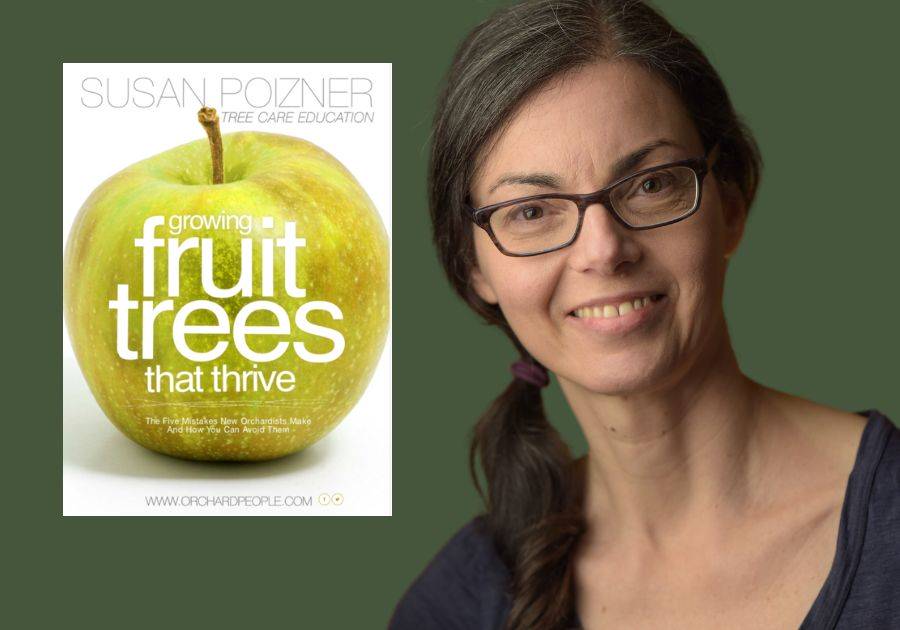

FRUIT TREE CARE NEWSLETTER
Fruit Tree Mulch: The Ultimate Guide

What is the best mulch for fruit trees?
When I first planted fruit trees, I knew I needed to mulch them. After all, when you visit any well-tended garden, you will see a pretty circle of mulch – usually wood chips or cedar mulch – carefully spread out around the base of the trees. But what exactly is fruit tree mulch?
Mulch is a name used for any material that we use to cover bare soil. People mulch their trees with organic materials like wood chips or compost, or with inorganic materials like gravel, plastic sheets or landscape fabric. There are two main benefits:
- Mulch prevents weeds from sprouting up in the bare soil.
- Mulch helps retain moisture in the soil to help keep trees hydrated.
But tree mulch can do so much more than that! Why just prevent weeds and keep moisture in the soil when a carefully chosen tree mulch can do so much more:
- Some tree mulches can add organic matter and fertility to the soil.
- Some mulches insulate tree roots, keeping them cooler in the summer and warmer in the winter.
- Some mulches can attract beneficial organisms in the soil that enhance tree health.
- Other mulches repel pests that might damage your fruit trees.
- And amazingly, some mulches can boost your fruit tree’s immune system, helping it build resilience so that they can fight off common fruit tree pests and diseases.
These benefits are fantastic for native and ornamental trees but they are even more important for fruit trees. That’s because fruit trees are the heavy lifters in the tree world. Like other trees they clean the air, stabilize the soil and moderate the temperature. But fruit trees also produce fruit for us to eat. And offering our trees a carefully chosen fruit tree mulch can help improve our trees’ health and harvest.
So, let’s explore some great fruit tree mulch options and when you might use them. You can also try some of them on your native and ornamental trees as well.
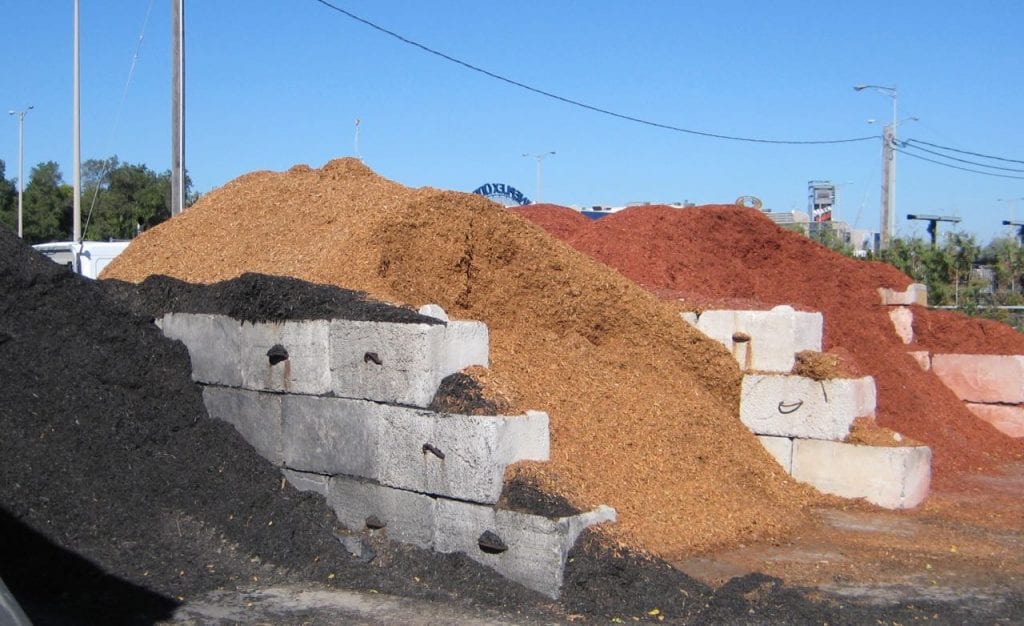
Benefits of wood mulch for fruit trees – and disadvantages!
Cedar bark mulch is one of the most popular wood mulches that you can buy and many people use it on landscape trees. But there are other wood mulch options including hardwood mulch and pine mulch. These commercially sold mulches are byproducts of the timber industry and they are made of wood bark only. They do have lots of benefits. But used on their own, many bark-based wood mulches can actually be bad for fruit trees – especially young trees.
The problem begins when you first lay the fresh bark mulch down around the roots of your fruit tree. Soil bacteria move into the mulched area and they will work to decompose the wood. But these bacteria need nitrogen in order to survive and wood chips are low in nitrogen. So, the bacteria pull nitrogen out of the soil and away from the roots of your fruit tree.
For fruit trees, this is not a good thing. Nitrogen is an essential nutrient for fruit trees and it gives them the nutrients they need for healthy leaf and branch growth. Trees that are low in nitrogen will not grow well and will experience stress. Young fruit trees that have not yet established themselves are particularly vulnerable to this problem.

But there are also benefits to using bark-based wood mulches around fruit trees – especially if you are layering the wood mulch on top of a more nutrient rich mulch like compost or well-rotted manure. We will talk about nutrient rich mulches in the next section. In the meantime, here are the advantages and disadvantages of a number of wood mulches that are available.
- Natural cedar mulch looks nice, prevents weeds and retains moisture around tree roots. Cedar mulch also has insect repellant qualities as it contains natural cedar oil which can deter termites and certain types of ants.
- Hardwood mulches are made from hardwood trees like hickory and oak trees. It breaks down faster than cedar mulch.
- Pine mulch is made from pine trees. It is usually not used around fruit trees because it can make your soil more acidic and fruit trees do not thrive in overly acidic soil.
- Colored mulches are wood mulches that are died red, orange or black. These dyes can leach into the soil and aren’t recommended for fruit trees.
If you want to opt for wood mulch, your best bet may be to source wood chips (for free!) from your local arborist. In that case, included in the shredded up mixture is also bits of nutritious, younger branches and even leaves. You can learn about the best wood chip mulches in this article.
So, wood mulches can play a role in fruit tree care. But they will need to be layered on top of a more nutrient rich type of mulch. And there are lots of options here too.
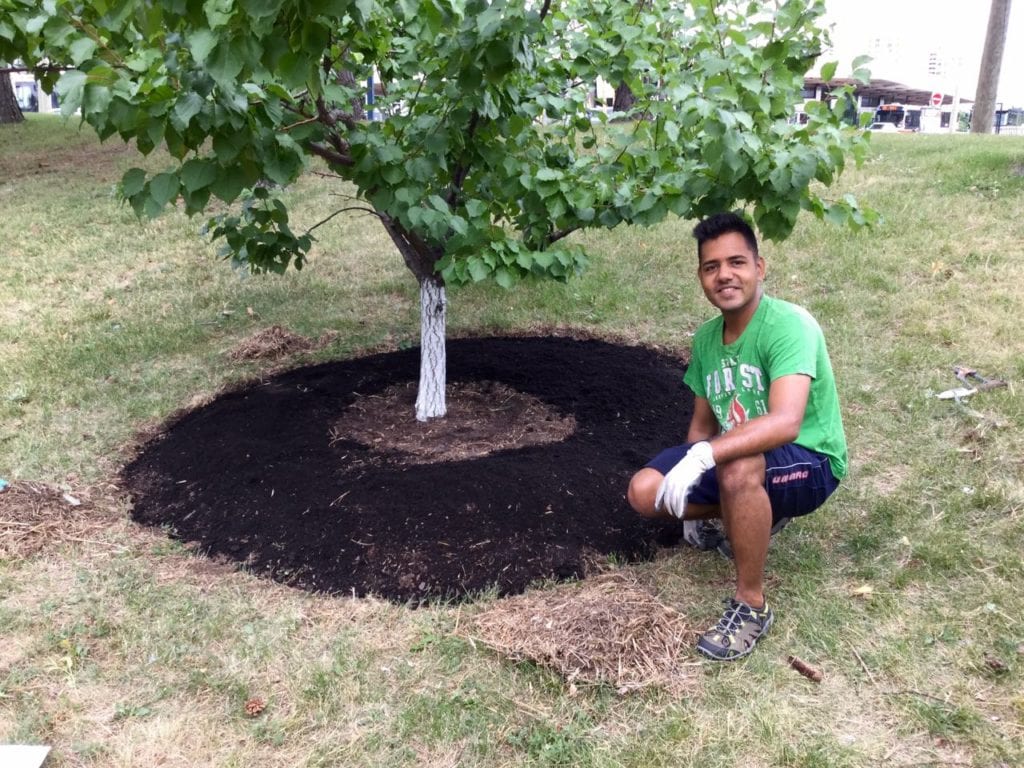
nutrient rich fruit tree mulches
If you really want to use a wood mulch around your fruit trees, you’ll want to layer it on top of another mulch that will offer nutrients to your tree in the first year. In Ben Nobleman Park Community Orchard, we use either compost or well-rotted manure for that.
Compost contains small amounts of all three primary nutrients that trees need: nitrogen, phosphorus and potassium. If you mulch your trees with one to two inches of compost in the spring, that compost will insulate the roots and prevent weeds like wood mulch but it will also add nutrition and organic matter to the soil over the following weeks and months. You can learn more about the role of compost in building good soil in the podcast below.
Manure can also be helpful. Manure usually contains nitrogen but not much phosphorus or potassium. But the problem is that fresh manure can actually burn tree roots and it can have pathogens in it that are toxic to humans. The manure that you buy from your local garden center will be composted and so it is safe to use. You might also consider buying dehydrated chicken pellets instead of using composted manure.
Like compost, leaf mold has small amounts of nitrogen, phosphorus and potassium. But while compost is produced by soil bacteria, leaf mold is produced by beneficial fungi in the soil. This is an amazing product to mulch with because it’s free and easy to make. Leaf mold also feeds beneficial microorganisms in the soil while improving soil texture and your soil’s ability to hold water.
To make leaf mold, just collect fallen leaves from your neighborhood. Avoid diseased leaves that can introduce a pathogen into your soil. And you might also want to avoid oak leaves which break down very slowly. Pile the leaves up in a corner of your garden, spray them lightly with water, cover the pile with a tarp and then wait for the beneficial fungi to do their work!
In one to two years, the fungi will have broken down the leaves, leaving behind a dark brown crumbly leaf mulch with a nice, earthy smell. Don’t want to wait that long? Just shred your leaves with a lawnmower or leaf shredder before adding them to the pile. This will make it easier for soil fungi to do their work and your leaf mold could be ready in a year or less.

affordable mulches for larger orchards
All of the mulches we have discussed so far are great for any type of tree, including fruit trees. But there are a number of mulches that researchers have experimented with that are particularly good to use in orchards.
You see, if you are just planting one or two trees, it’s not that expensive to buy and bring in some bags of compost or mulch. But if you need to mulch an entire orchard of ten thousand fruit trees, that will be incredibly expensive.
In an episode 31 of The Urban Forestry Radio Show and Podcast, I spoke to Professor David Granatstein of Washington State University's Center for Sustaining Agriculture and Natural Resources about the mulches that researchers are testing for use in orchards. Here are some of his top picks.
Straw mulch is often used when you are growing strawberries. It keeps the berries from touching the soil, retains moisture and protects the roots of the plants from extreme hot or cold temperatures. Straw mulch is also beneficial for fruit trees. While it is not as nutrient rich as compost, it will eventually break down and provide some nutrition to your fruit trees. The tricky part is ensuring that your straw is seedless! Ideally it should be harvested before the plant (often alfalfa) produces seeds. If it’s harvested too late, you may find that your mulch produces more weeds than it prevents. Straw mulch can also attract voles and other rodents who use the straw as habitat. These creatures then chew up the bark on our fruit trees. So, if voles are a problem in your community, avoid straw mulch.
Shredded Paper is a surprising option that, according to researchers, can be a cheap and effective fruit tree mulch. The shredded paper knits together over time to form a layer that prevents weeds. Shredded paper mulch is great because it is lightweight and you can easily make it at home with paper that you would send to be recycled anyways. Just feed your scrap paper into an inexpensive paper shredder and lay it down around your fruit tree’s roots. When it decomposes, the paper will add organic matter to your soil. The downside is that shredded paper mulch is low in nutrition but if you layer it with compost you could have a really easy and inexpensive way to protect your fruit tree from weeds and to feed it at the same time.
Living mulches are becoming increasingly popular. These are also called cover crops or green manures and they are incredibly flexible. Some help us fight weeds. Some stabilize the soil or provide increased nutrition. Organic orchardists will plant these living mulches in alleys between trees. But the secret here is to choose the right living mulch for your unique needs. You can learn more about cover crops in this radio show and podcast.
The downside of living mulches is that like straw mulch, they can attract pests like rabbits and voles. Some living mulches can also be invasive in certain conditions. So, you need to do a little research before using these types of mulches.

is ramial mulch the perfect mulch for fruit trees?
So far, we’ve covered lots of different mulching options. But there is one option that was overlooked for most of humanity’s fruit tree growing history.
You see, pruning plays a huge role in how we care for our fruit trees. We prune fruit trees annually in the spring or summer to improve tree health and harvest quality. And when we are done, growers often burn the cuttings or throw them away.
What few realized until recently is that the youngest tree branches – those that are under 2 inches thick, can be the perfect mulch for fruit trees. These tender young branches are rich in nutrients that fruit trees need like nitrogen, phosphorus, potassium, calcium, and magnesium which can be found in the cambium, or the living tissue in the branch. And if you cut these young branches up or shred them, they will eventually decompose, releasing nutrients into the soil where they will eventually be available to our fruit trees.
Mulch from young tree cuttings is very different from wood mulch, as the latter is made from thicker, older branches and the tree trunk. These older parts of the tree do have cambium tissue, but they are mostly made up of heartwood which has a lower nutritional value.
In terms of mulches from tender young branches, there are two amazing options to consider.
- Ramial mulches are made from the cuttings of your fruit trees but they also can be made from young branches that you have pruned off of other healthy deciduous trees. All of these cuttings will have lots of healthy living tissue that will eventually decompose and enrich the soil.
- Willow mulch is another option. Willows produce salicylic acid, the main component of aspirin, and researchers have found that a mulch made from young willow branches can actually improve your fruit tree’s immunity and help it fight off common fruit tree pest and disease problems.
Making ramial or willow mulch is easy but can be time consuming. During pruning sessions, you can have a friend or family member take the youngest branches and cut them up into one-inch chunks and leave them around the base of the tree.
Or you can buy an electric chipper and shredder. Just feed the young branches in and you’ll have ready-made ramial or willow mulch that your fruit trees will love.
One warning though…. only use healthy branches when making these types of mulches. If the branches are diseased, then that disease will be able to continue to spread if it’s left on the site.
Another option is to buy ramial or willow mulch from a local willow grower. There are some in the central NY area as well as in other areas of the US that might be willing to supply mulch for those who are interested. Other sources may include:
- The Willow Project at SUNY-ESF
- There are several willow growers in the central NY area as well as other areas in the US that might be willing to supply mulch for people that are interested.
Do ramial and willow mulches come with a down side? Well, like wood mulch from mature branches, they may also steal nitrogen from the soil in the first year. So again, it’s good to layer your ramial or willow mulch on top of compost or manure to ensure that your fruit tree will be able to access nutrients in the shorter term as well.
Finally, let’s explore non-organic tree mulch options and why you may not want to use them with your fruit trees.
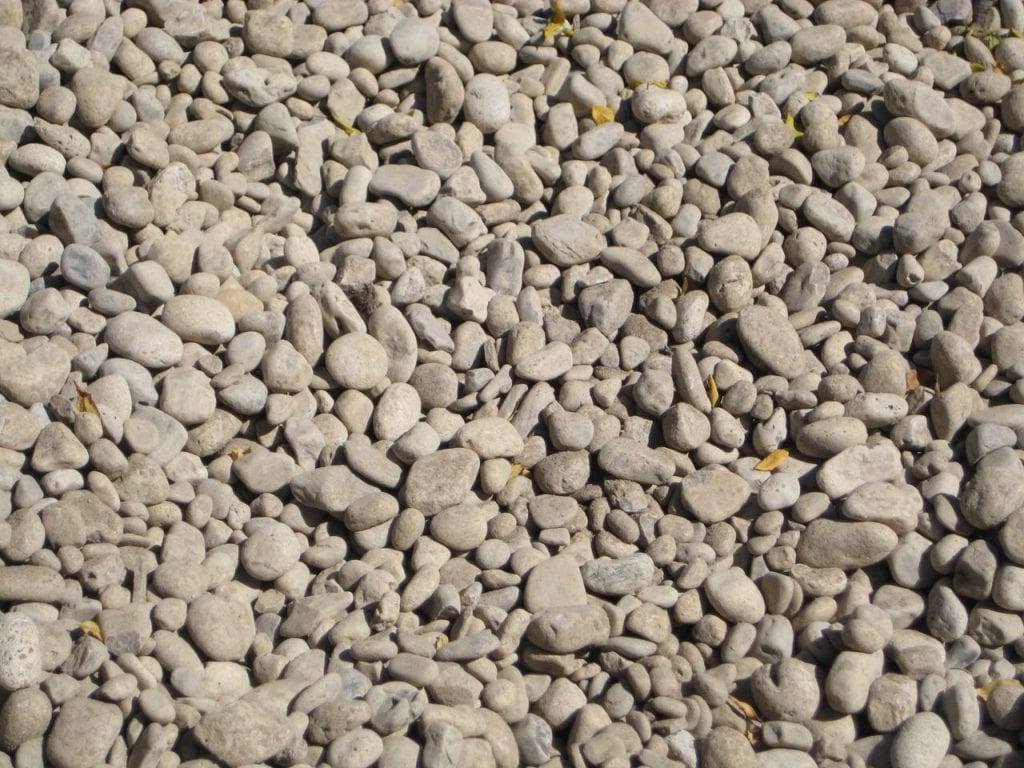
why non-organic mulch options can miss the mark with fruit trees
Landscapers often turn to non-organic mulch options in order to keep landscapes looking perfect. Some mulch trees with gravel. Others use landscape fabric and they cover it up with wood mulch. Some even use black plastic to mulch around their trees. When it comes to fruit trees these aren’t great options. Here’s why:
Landscape fabric covered with wood mulch will prevent weeds around the base of the tree. But fruit trees need organic matter and nutrients. If there is a fabric barrier between the wood mulch and the soil, how will you feed your tree? The nutrients from the decomposed wood mulch won’t get through. And in order to feed your trees with compost, you will have to remove the fabric and then put it back. This is not a great option.
Black plastic mulch sheets are even worse. Your fruit trees need nutrients which won’t get to the root through the plastic. But the roots also need water and oxygen. Black plastic will limit the moisture and air that can get through into the soil. This is another option to avoid when growing fruit trees.
Some orchards do use gravel to mulch their fruit trees. Their goal is to prevent weeds and deter rabbits and other wildlife that might nibble on the bark of their trees. But again, with gravel, you are missing your opportunity to feed your fruit tree with your mulch. If you do use it, you’ll have to pull the gravel back each year, add a nutritious mulch like compost, and then replace the gravel.

layering mulches to maximize benefits
When it comes to fruit trees and mulch, there is no one size fits all option. You will choose your mulch depending on your unique environment and the goals that you want to achieve. But sometimes, two mulches can be better than one. Here are some examples:
- Don’t have enough wood for two inches of ramial wood cuttings? Put down what you have and then cover that with compost to ensure your tree will have enough nutrition for the year.
- Do you want to mulch with compost but you’re not sure it will provide enough weed prevention? Cover two inches of compost with an inch of cedar mulch.
- Do you want to use shredded paper mulch but you’re afraid it will blow away? Experiment by covering it with a layer of compost or straw.
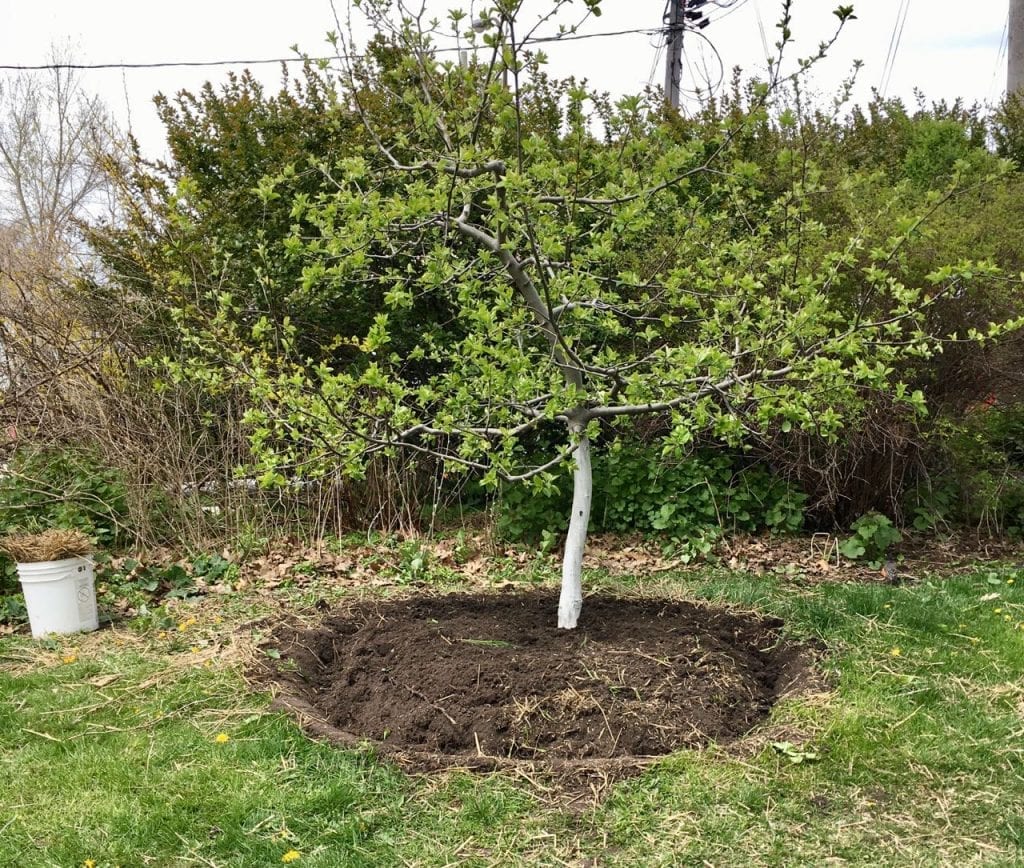
how to mulch your fruit tree
Now you have lots of options in terms of fruit tree mulches. But once you have chosen what to use, how do you mulch your fruit tree? Here are a few simple rules:
- Remove weeds and grass around your fruit tree up until the drip line of the tree as that is where the feeder roots are that need water and nutrition.
- Lay out your mulch in a circle, or donut shape around your fruit tree.
- Keep the mulch approximately 6 inches away from the tree trunk. If the mulch touches the trunk it may rot the wood or become an entry point for pests.
- Spread your mulch up to the edge of the canopy as that is where most of the feeder roots are. The feeder roots are the roots that take in water and nutrition.
- Do not mulch too thickly. More than 3 or 4 inches of mulch can become heavy and deprive the roots of oxygen and that can cause root rot, fungal diseases and other problems.
Ultimately, the more you understand fruit trees and the care that they need, the easier it will be to choose the right mulch for your tree. If you are ready to boost your knowledge and confidence in fruit tree care, sign up for one of my premium online courses in fruit tree care.
Happy mulching everyone!
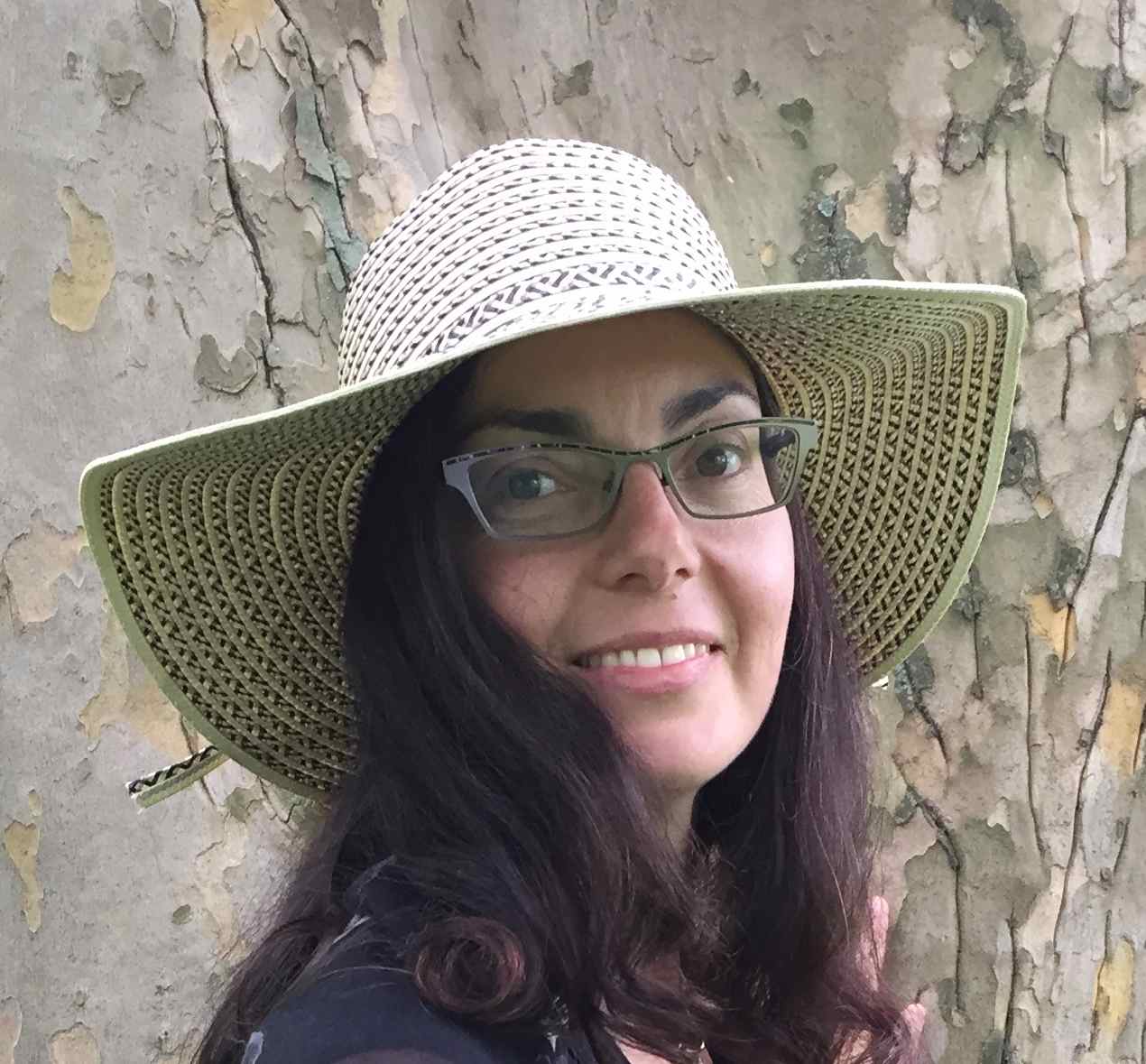
Susan Poizner
Susan Poizner is an urban orchardist in Toronto, Canada and the author of three books on fruit tree care including Grow Fruit Trees Fast, Growing Urban Orchards, and Fruit Tree Grafting for Everyone. Susan trains new growers worldwide through her award-winning fruit tree care training program at Orchardpeople.com. Susan is also the host of the Orchard People radio show and podcast and is an ISA Certified Arborist.

